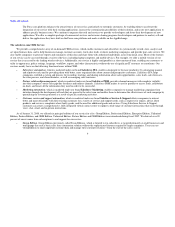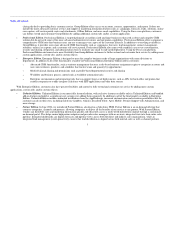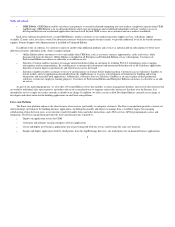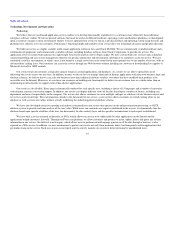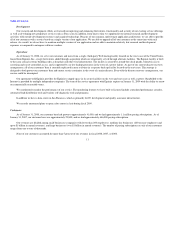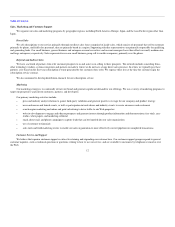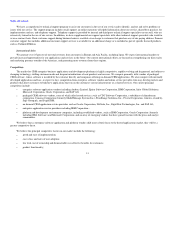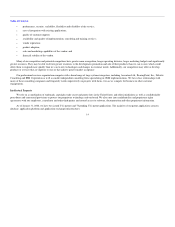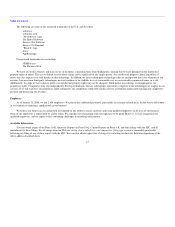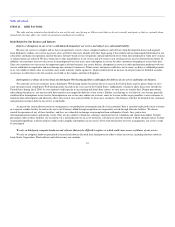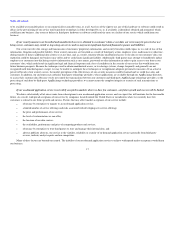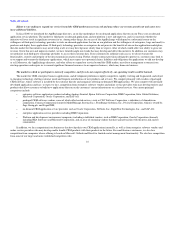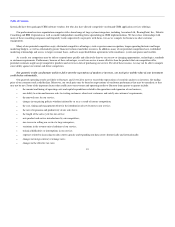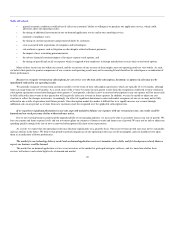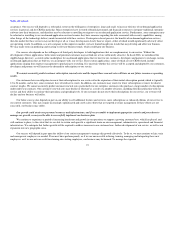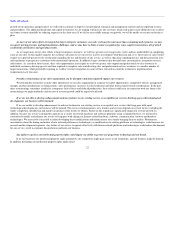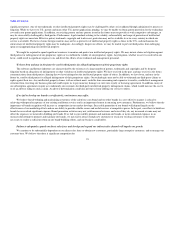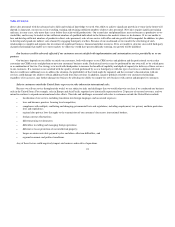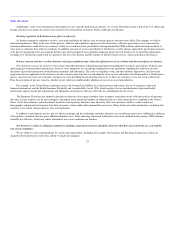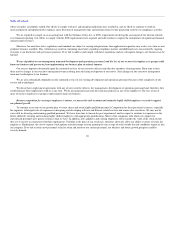Salesforce.com 2007 Annual Report Download - page 19
Download and view the complete annual report
Please find page 19 of the 2007 Salesforce.com annual report below. You can navigate through the pages in the report by either clicking on the pages listed below, or by using the keyword search tool below to find specific information within the annual report.
Table of Contents
ITEM 1A. RISK FACTORS
The risks and uncertainties described below are not the only ones facing us. Other events that we do not currently anticipate or that we currently deem
immaterial also may affect our results of operations and financial condition.
Risks Related to Our Business and Industry
Defects or disruptions in our service could diminish demand for our service and subject us to substantial liability.
Because our service is complex and we have incorporated a variety of new computer hardware and software, both developed in-house and acquired
from third party vendors, our service may have errors or defects that users identify after they begin using it that could result in unanticipated downtime for our
subscribers and harm our reputation and our business. Internet-based services frequently contain undetected errors when first introduced or when new versions
or enhancements are released. We have from time to time found defects in our service and new errors in our existing service may be detected in the future. In
addition, our customers may use our service in unanticipated ways that may cause a disruption in service for other customers attempting to access their data.
Since our customers use our service for important aspects of their business, any errors, defects, disruptions in service or other performance problems with our
service could hurt our reputation and may damage our customers' businesses. If that occurs, customers could elect not to renew, or delay or withhold payment
to us, we could lose future sales or customers may make warranty claims against us, which could result in an increase in our provision for doubtful accounts,
an increase in collection cycles for accounts receivable or the expense and risk of litigation.
Interruptions or delays in service from our third-party Web hosting facilities could impair the delivery of our service and harm our business.
We currently serve our customers from a third-party Web hosting facility located on the west coast of the United States and we plan to begin to serve
some customers from a third-party Web hosting facility located on the east coast of the United States. Additionally, we plan to add a data center outside the
United States during fiscal 2009. As we continue to add capacity in our existing and future data centers, we may move or transfer data. Despite precautions
taken during this process, any unsuccessful data transfers may impair the delivery of our service. Further, any damage to, or failure of, our systems generally
could result in interruptions in our service. Interruptions in our service may reduce our revenue, cause us to issue credits or pay penalties, cause customers to
terminate their subscriptions and adversely affect our renewal rates and our ability to attract new customers. Our business will also be harmed if our customers
and potential customers believe our service is unreliable.
As part of our current disaster recovery arrangements, our production environment and all of our customers' data is currently replicated in near real-time
in a separate standby facility located on the east coast. Features added through acquisition are temporarily served through alternate facilities. We do not
control the operation of any of these facilities, and they are vulnerable to damage or interruption from earthquakes, floods, fires, power loss,
telecommunications failures and similar events. They are also subject to break-ins, sabotage, intentional acts of vandalism and similar misconduct. Despite
precautions taken at these facilities, the occurrence of a natural disaster or an act of terrorism, a decision to close the facilities without adequate notice or other
unanticipated problems at these facilities could result in lengthy interruptions in our service. Even with the disaster recovery arrangements, our service could
be interrupted.
We rely on third-party computer hardware and software that may be difficult to replace or which could cause errors or failures of our service.
We rely on computer hardware purchased or leased and software licensed from third parties in order to offer our service, including database software
from Oracle Corporation. This hardware and software may not continue
16


